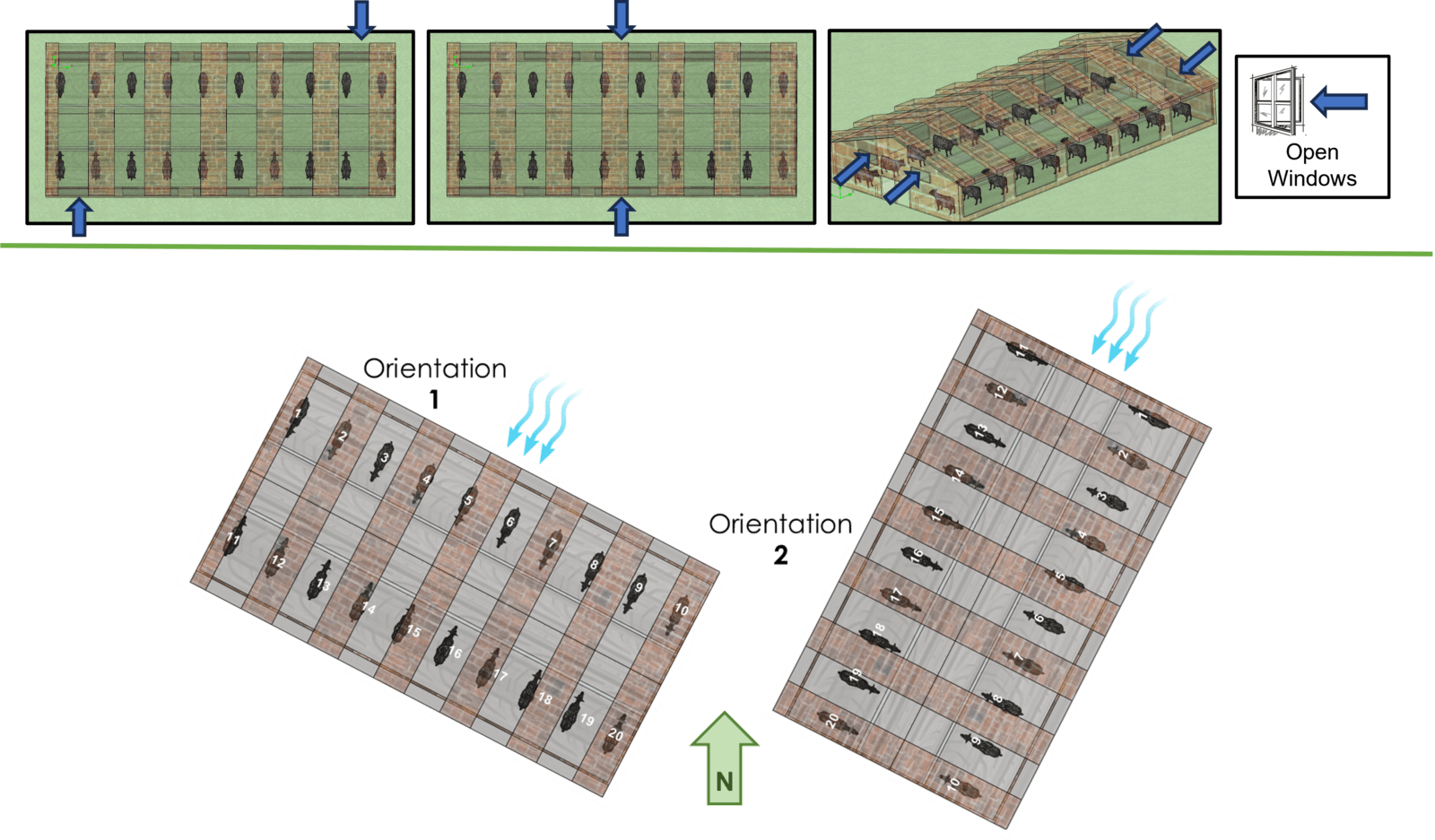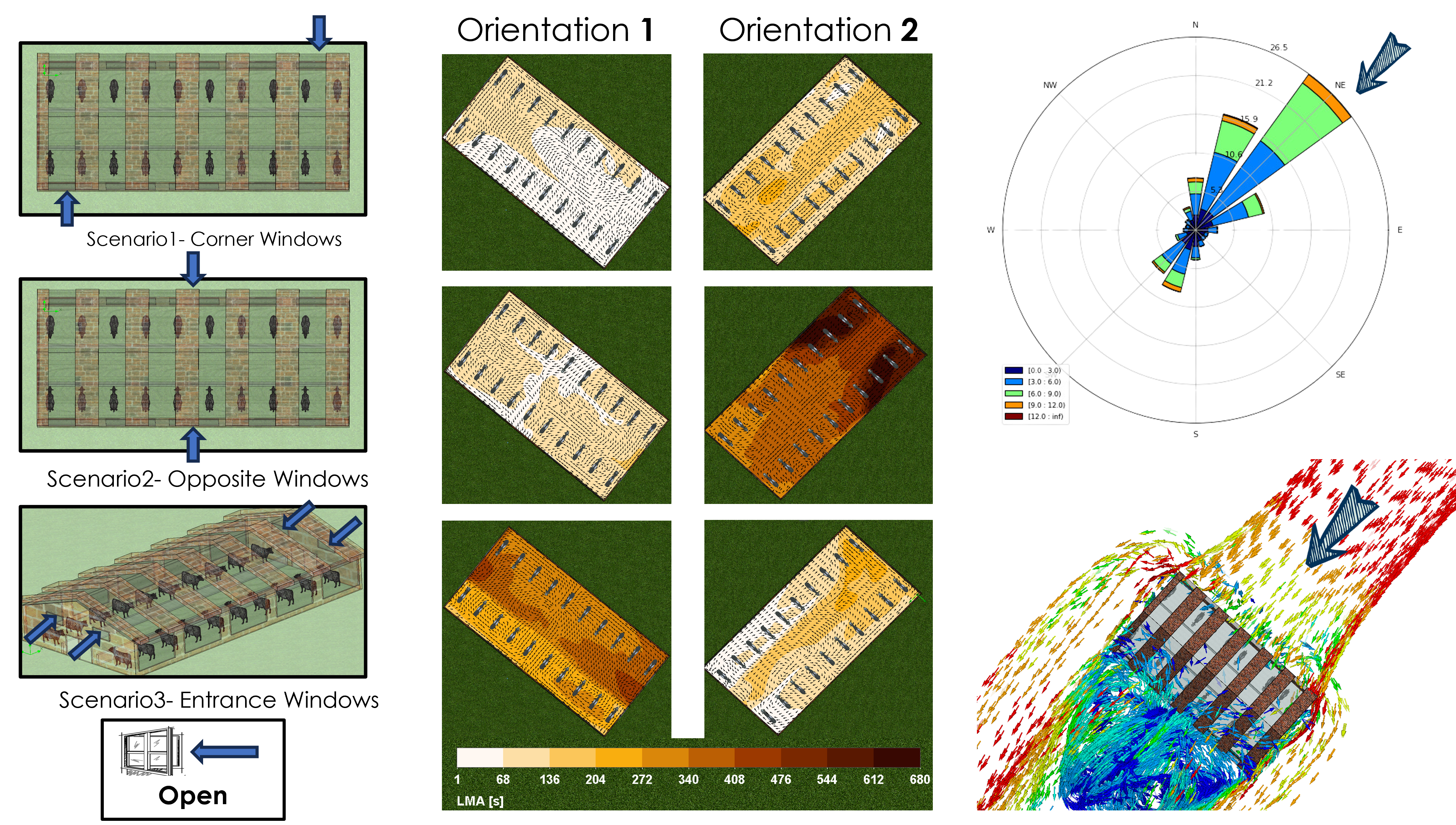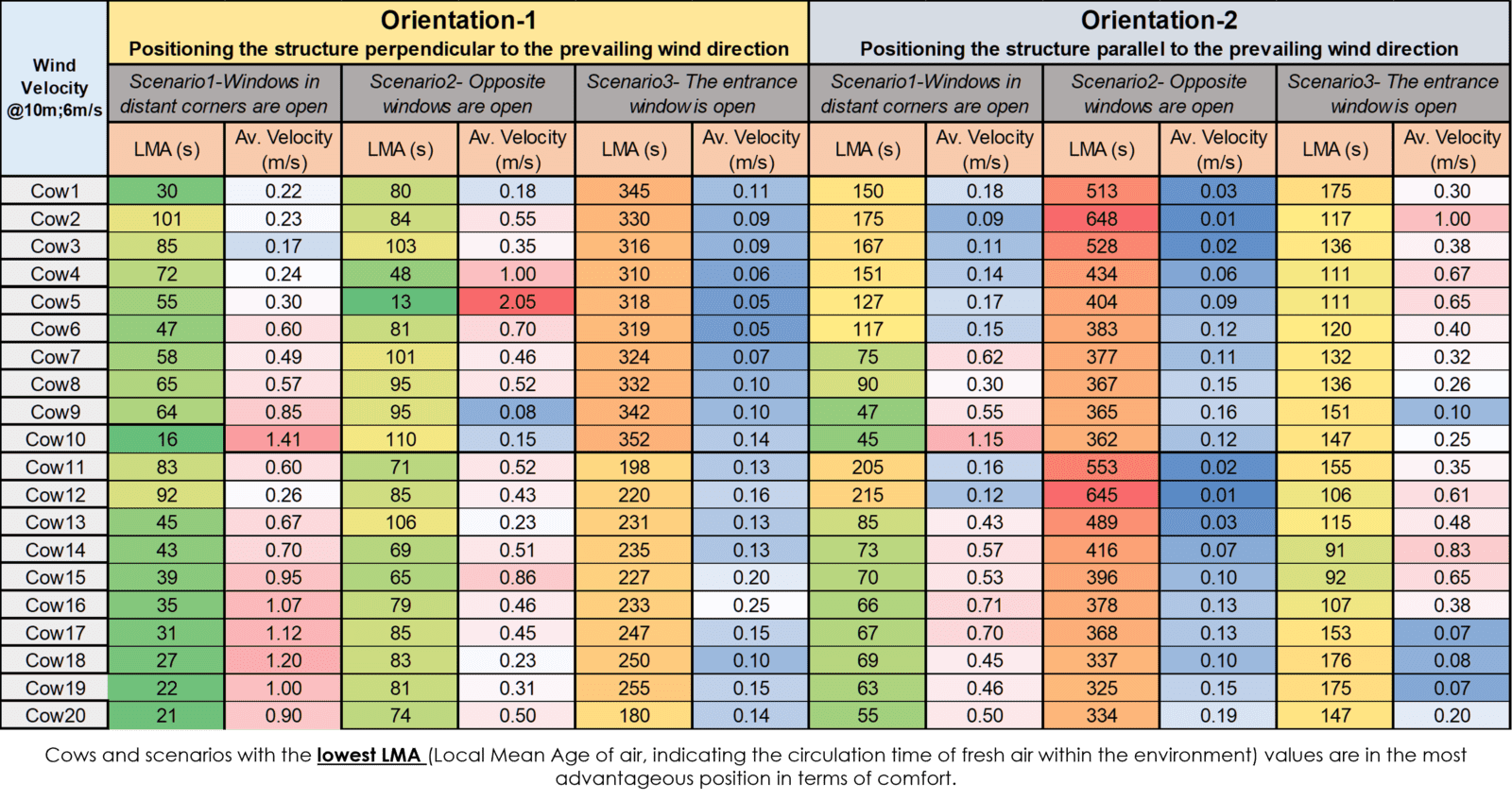
CFD for The Happiness of Cows
Ventilation systems in barns, especially in sensitive agricultural activities such as dairy farming, are of critical importance for the sustainability of animal health and productivity. Computational Fluid Dynamics (CFD) analyses emerge as a modern and effective tool in the design and optimization of these systems. CFD can predict how ventilation systems will perform and how animals will be affected under specific weather conditions. This article will offer an in-depth look at the advantages of CFD analyses in the design and management of ventilation in dairy barns, as well as the special needs to be considered during the winter months.
In the analysis scenario, 20 different cow placements, 3 different states of windows being open, and the structure being positioned perpendicular/parallel to the prevailing northeast wind were compared.

The primary goal here is to examine the velocity and age of air, which are fundamental factors for indoor air quality, through Computational Fluid Dynamics (CFD) methods. Air moving too quickly can chill animals in winter months due to the effect of cold. While this value can naturally reach up to 3 m/s in summer months, it should not exceed 0.4 m/s in winter. Another factor under scrutiny is the aging of air after it enters indoors (the state of being suspended in place, unable to exhaust due to turbulence). This parameter is especially important for the exhaust of indoor humidity and noxious gases. If there is no rapid circulation in the summer months, the heat can be very uncomfortable, whereas in winter, humidity can lead to an increase in mold with water vapor. Just like in human health, these threshold values should be considered in the design, and structures should be designed accordingly for animals.

CFD analyses offer various advantages for enhancing the effectiveness of barn ventilation systems.
- Detailed Airflow Modeling: CFD can model the airflow within barns in detail, thus identifying the necessary modifications for the optimization of ventilation systems. This allows for a thorough examination of airflow, temperature distribution, and humidity.
- Energy Efficiency: CFD plays a significant role in reducing the energy consumption of ventilation systems. Optimized airflow direction and air exchange rates help prevent unnecessary energy consumption.
- Adaptability to Weather Conditions: CFD analyses predict how the indoor climate of a barn will respond to different weather conditions in advance. Thus, ventilation systems can be dynamically adjusted according to external weather conditions.
- Enhancement of Animal Welfare: Ventilation systems optimized with CFD improve the thermal comfort and overall welfare of animals. This has positive effects on milk yield and the overall health status.
Average air velocities and LMA (Local Mean Age) values were calculated for a total of 20 cows in the barn. The better the quality of air they breathe in their living spaces, the more comfortable and productive they will be.
According to the analysis results, the comparison table is as follows:

For the specified conditions only:
- Scenario1 provides the best fresh air circulation when positioned parallel or perpendicular to the prevailing wind,
- Within the context of windows being open at three different points, Scenario1 has the highest performance,
- Orientation2 and Scenario2 have the worst ventilation performance,
- In this case, the luckiest five cows are numbers 20, 15, 14, 13, and 17…
This analysis was completed by taking only air circulation as a reference, neglecting temperature, humidity, and other contaminating gases. In a real design scenario, Alkazar meteorological, climatological, and topographical data should also be considered to determine the most ideal conditions for the farm owner.
Carefully examine your designs for happier cows!



